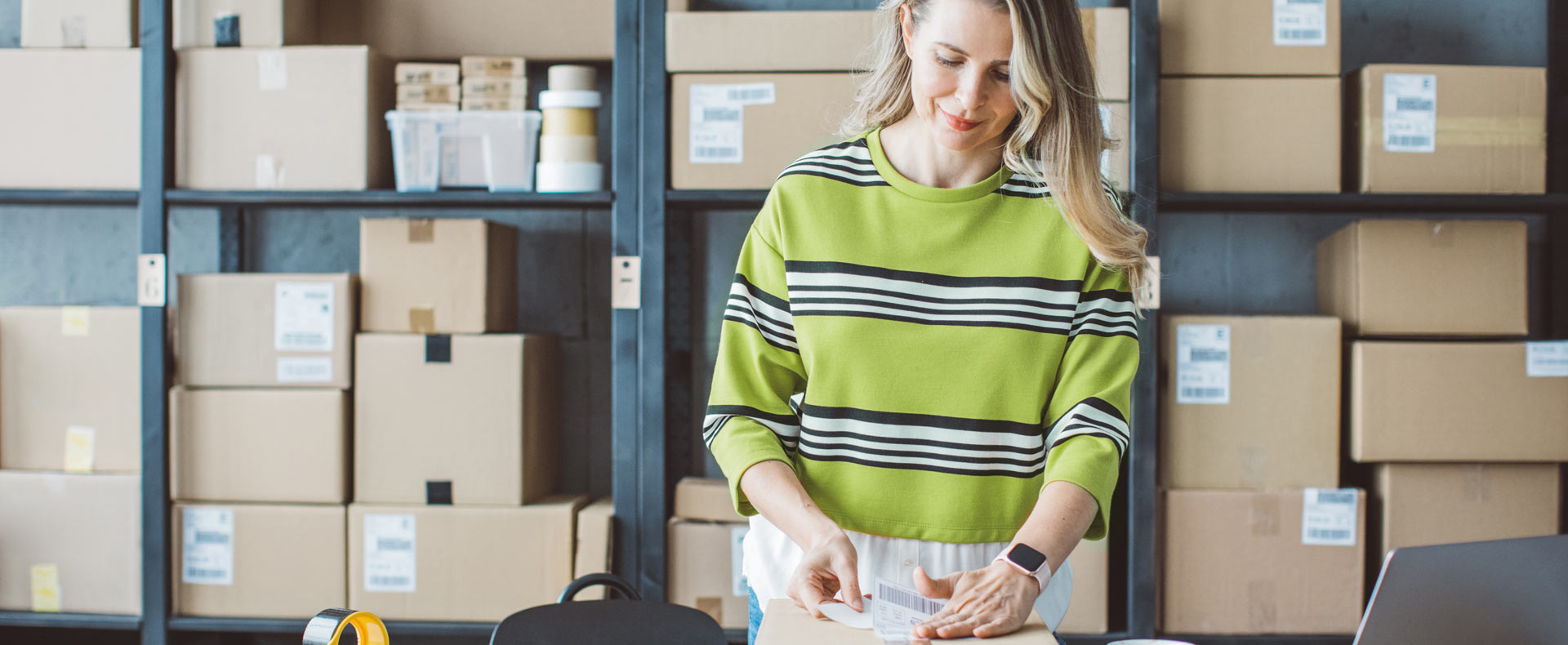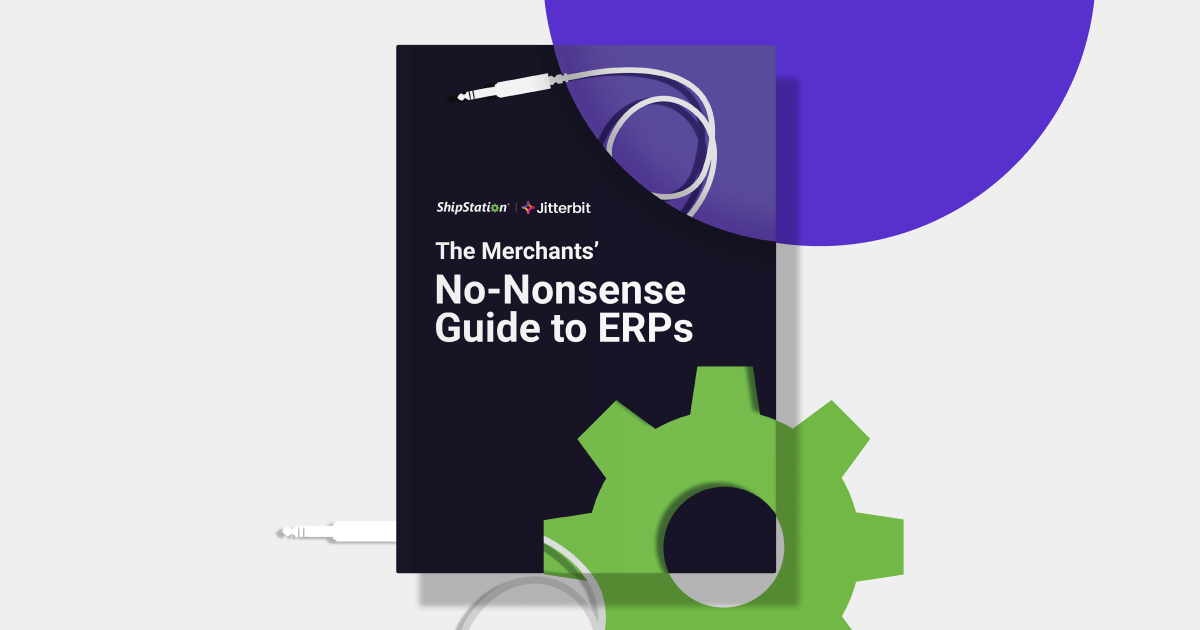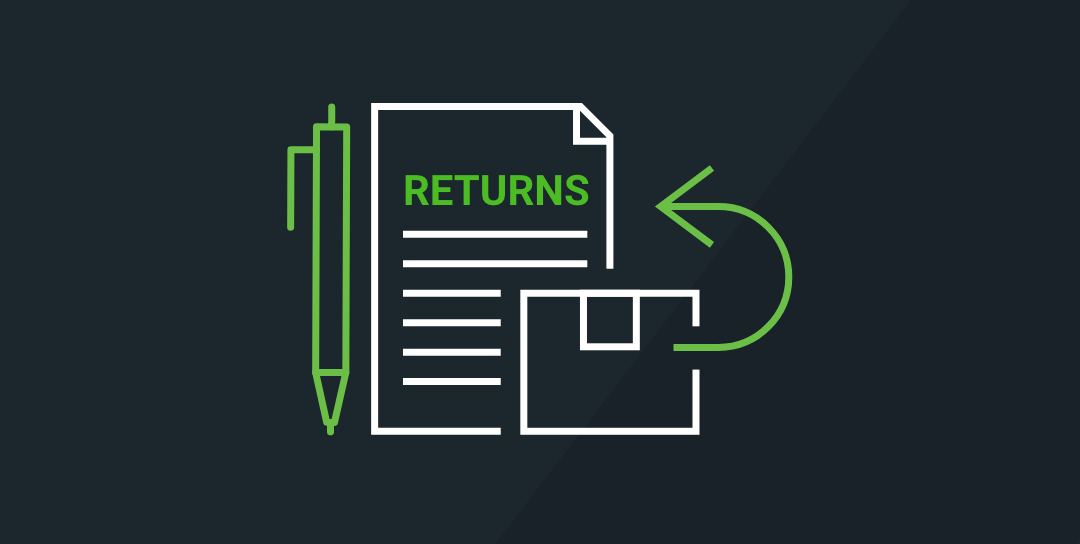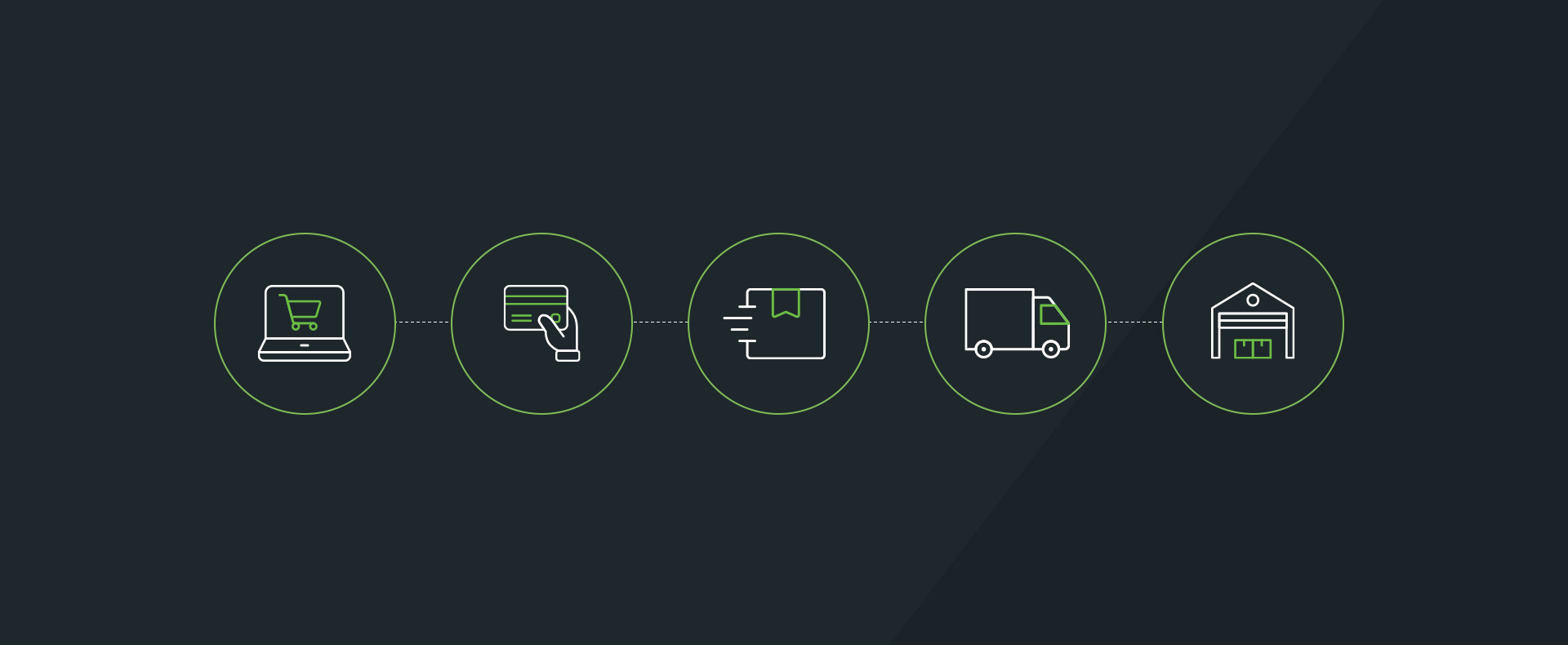Omnichannel Fulfillment: Deliver a Seamless Customer Experience
Multitasking is now more widespread than ever due to our hectic modern lifestyles, and online shopping is no exception. Consumers no longer want to shop in one static store but across multiple streams of retail. Luckily, today’s customers have several ways to engage with ecommerce businesses. Virtual assistants, websites, and social media are just three examples. This method of shopping is known as omnichannel.
Studies show the more channels shoppers delve into when purchasing, the higher their value to the retailer.
The Seamless Customer Experience
Modern consumers demand seamless buying, and the best way to deliver this is by providing a positive purchasing experience.
Omnichannel retailing and fulfillment offer a smooth and straightforward customer journey across a multitude of devices without interruption. When buying is simple, customers’ lives are made easier.
The first step to delivering a seamless customer experience may be improving your Shopify Plus store. Elements such as UX design and simple navigation can make this a pleasure to browse.
However, it doesn’t stop there. The traditional order fulfillment process of accepting a website order, processing, then allocating to a shipping provider for delivery has moved on, and there’s now much more to it.
The seamless customer experience relates to all touchpoints along the buying journey. Digital user navigation routes should be designed to address:
- Customer needs and preferences
- Clearly defined migration points
- Best-practice contact-center operations
- Multi-skilled agents placed in the most effective areas of the journey
- Digital care channels to handle engagement
Successful omnichannel fulfillment requires complete visibility at any touchpoints consumers interact with.
What Is Omnichannel Fulfillment?
Omnichannel fulfillment refers to the order fulfillment journey across different channels. Successful eCommerce businesses use all available channels with the aim of completing transactions in the manner that best suits the customer.
For example, the process might look like this. The consumer places their order online. Next comes order acceptance via the business’s order management software. The order is shipped to the store directly from the fulfillment center, then picked up by the customer in-store – all at a time that’s convenient to them.
Omnichannel fulfillment puts control in the hands of the buyer. They decide when and where they want their order. When this approach is embraced by eCommerce stores, the customer experience is elevated.
What Can Omnichannel Fulfillment Do?
Omnichannel fulfillment empowers customers to:
- Examine products
- Compare prices
- Place orders
- Collect or have orders delivered according to their preferred method
- Navigate seamlessly between channels
To make the fulfillment process more streamlined, many eCommerce businesses shorten their distribution cycle. These efficient back-end changes result in faster order processing and better delivery options for customers.
Multichannel order management software is valuable for instantly updating inventory levels and availability. The right item has to be available at the right time and in the correct location for the omnichannel fulfillment process to succeed.
Whether orders are placed through your website, marketplace, or store, every part of the purchasing and collection or delivery process must be seamlessly integrated.
What Is the Omnichannel Fulfillment Process?
Omnichannel order fulfillment consists of five steps:
- Warehousing: From storage of products and inventory management through to checking products.
- Order management: This step handles order processing and confirmations.
- Packing: Next up is product picking, labeling, and invoice processing.
- Shipping: The order is made ready to leave the warehouse and is shipped to the customer.
- Customer care: After-sales including customer order feedback post-delivery.
The omnichannel order fulfillment process flips the standard order fulfillment process on its head because the possibilities are endless. Here are some examples of how it can be done:
- Store to consumer
- Warehouse to consumer
- Warehouse to pick-up location
- Store to store
- Consumer to warehouse
Customer returns function in much the same way with an omnichannel fulfillment model. It’s all about making the process as streamlined as possible for the consumer. For example, if their preference is to return an order via a local collection point, your business must accommodate this.
What Are the Types of Omnichannel Fulfillment?
There are three primary types of omnichannel fulfillment. These are:
Store Fulfillment
In this fulfillment scenario, brick-and-mortar stores hold stock on the premises and then ship directly. This option suits smaller enterprises that want to avoid leasing a warehouse and running up hardware costs.
Warehouse Fulfillment
A fully-functioning fulfillment center acts as a separate warehouse, providing full stock inventory capabilities. Streamlined fulfillment centers are advantageous for consumers as they mean orders are shipped faster.
You can sync management and dispatch operations for complete control over every step of the fulfillment process.
Third-Party Fulfillment (3PL)
3PL fulfillment means outsourcing the fulfillment process to a third party—from receiving orders through to picking and packing, inventory management, shipping, and storage.
This method allows orders to arrive from various channels (such as social media or your website) to the third party for fulfillment. This third party also takes care of the after-sales customer experience and handles feedback.
3PL reduces the landed cost of orders as the third-party company can fulfill them in the most efficient way. This is due to their buying power and ability to negotiate the best shipping rates.
Image created by writer
Customer Benefits of Omnichannel Fulfillment
An Improved Customer Experience
This is one of the most important benefits – after all, omnichannel fulfillment exists to provide the best retail experience for customers. It’s the best way to order and deliver the product via the best route and to the best place. Meeting expectations creates demand for your products and encourages repeat business.
A Personalized Approach
Enhancements in data collection have also paved the way for a data-driven approach. This can be used to provide personalized customer experiences across all communication channels. Purchasers can tailor the omnichannel experience according to their preferences.
Blends Online and In-Store Experiences
Your omnichannel fulfillment strategy blends in-store and online activities seamlessly. For example, with omnichannel marketing and fulfillment, they can browse Instagram for inspiration, then shop the product on your website, order, and collect in-store or arrange delivery according to what suits.
More Sales
Besides providing an enhanced customer experience, you’re increasing the likelihood of sales. When customers can shop according to their preferences, they’re encouraged to choose you over your competitors.
More Choice
With a variety of channels to choose from, omnichannel retail makes it easier for consumers to compare product options, costs, and fulfillment preferences. It also facilitates a wider choice of products and retailers for the consumer to choose from.
Order Accuracy
Omnichannel fulfillment, when used with the right technology, ensures accurate orders. Gone are the days of manually entering these through a traditional fax machine. (Although, of course, loyal followers of fax machines may use FoIP, the fax with a modern touch).
A complete shopping experience
From product visibility and engagement through to purchasing, omnichannel fulfillment offers consumers a choice of channels from their preferred retailer. A more interactive shopping experience is embraced by the younger target audiences of today, who have no time for friction when searching for must-have purchases.
Establishing a digital presence across channels and empowering each channel to serve the consumer at all stages allows eCommerce stores to increase brand loyalty, awareness, and average lifetime value.
Customer Considerations
Customer expectations during the eCommerce journey can be segmented as follows:
- Reliability. Honest communication at every stage.
- Interaction and care. Empathy, simplicity, and clarity in all interactions.
- Speed and flexibility. Responsiveness, a time and needs-based service.
It’s crucial to address all aspects of customer expectations to deliver a comprehensive and seamless customer journey. Rather than focusing on individual journey touchpoints, seek to design service journeys that balance reliability, interaction, and speed.
Successful omnichannel fulfillment means understanding the inherent digital behavior of consumers and offering the best channels to align with this. Different customers will have different needs. For example:
- Digital by lifestyle. Embrace the digital world and always strive to communicate digitally.
- Digital by choice. Understand the convenience digital services bring and incorporate them into their lives.
- Digital by need. Engage with digital channels only when strictly necessary.
- Offline. Absolute preference for non-digital communications.
An ideal omnichannel fulfillment strategy takes each group of customers and designs a primary service for each based on their preferences. For example, the ‘digital by need’ category may welcome tools to make self-service easier.
Decide how much value each customer sector brings to your eCommerce business, then calculate what’s required to improve their customer journey and create a seamless online experience.
Moving Forward with Omnichannel Fulfillment
To put this fulfillment business model into place, tell your audience about it. This is an opportunity for you to market, and it will be something your consumers want to know about.
Be sure to vocalize the new ways in which your customers can place, receive, collect, and return their orders. Discuss the benefits and how your service will make their lives easier.
Continually seek to tap into your consumers’ minds to understand what they want. Flexibility is key to enabling consumers to use their choice of channel at whichever point suits in their buyer journey.
Embracing Omnichannel Fulfillment
Consumers now expect more, so you must deliver more. Make sure every interaction with them is a favorable one. Connect the dots along your channels each step of the way to purchase.
Omnichannel fulfillment brings so many opportunities to the eCommerce business table, including:
- Opportunities to get ahead of the competition
- Deliver fantastic customer experiences
- Engage with customers and promote loyalty
- Facilitate orders from multiple channels
- Make ordering easy
Smart retailers embrace the power of omnichannel fulfillment, using it to make the consumer ordering process simpler and more convenient. This ensures customers feel special, valued, and are more likely to be loyal.
Are you ready to hop on board the omnichannel fulfillment train?
Author Bio:
Nick Shaw – Brightpearl
Nick Shaw has been Chief Revenue Officer (CRO) of Brightpearl, the number one retail-focused digital operations platform which encompasses sales and inventory management software, accounting, logistics, CRM, and more, since July 2019 and is responsible for EMEA Sales, Global Marketing and Alliances. Before joining Brightpearl, Nick was GM and Vice President of the EMEA Consumer business at Symantec and was responsible for a $500m revenue business. Nick has written for sites such as Hubspot and G2. Here is Nick Shaw’s LinkedIn.





